Last year I had the chance to go see the Keepers of the Flame exhibit at the Norman Rockwell Museum. It remains one of the greatest exhibitions I have seen. Not just for the art, though it was among the best and most beautiful, but for the information and catalog. Here is a link to the catalog on Amazon, but I fear that the catalog is going to be very hard to get hold of. I did a search before this post and couldn’t find more than a couple copies. I’ll keep the link here in case it become available. It’s worth it.
Four paintings that I had not seen in person stood out. Howard Pyle’s Travels of the Soul. I found myself coming back to them over and over. They are original in their palette and composition and the execution is so full of brilliance that I think you could learn much of what it means to really use paint, just by studying these four paintings. They are also compelling in their imagery, showing vignettes of the mortal experience.
The Wicket of Paradise
Here, the woman has just left paradise and her soul is entering into the mortal realm. Just behind the door, waiting for her, is Death. He waits patiently, playing an instrument to pass the time before the inevitable. I love the arrangement of the wings on her head. They don’t sweep back, but forward and out to the sides. I know that I would have not done them this way, but they are so interesting. The foilage is all just indicated and used to create interesting shapes. I also love how Pyle would treat the shadows. Look how warm and high in value the shadows are on her dress and skin where she is in the light, but it quickly falls off as the light does.
In this detail you can see how simple but fascinating the edges, values and paint application are. Variety is another word for contrast Pyle took every change to give variety to all the tools at his disposal. You can also see at the top of the dress in the bottom of the image below, that not all the shadows are in the lower painting layers, but applied last or nearly so on top of the light side.
This painting of Death is almost not there. So much is lost in the shadows and edges completely disappear, but the impact is not lost. I want to paint like this!
In the Meadows of Youth
Here the woman is entranced by love and music, lead by some divine presence. Death is still there, playing his tune in the background. Not stalking her, but waiting. It’s a bit dark, but also pragmatic. More brilliant painting. Impasto, glazing, scraping, drawing, hard and soft edges, contrast and edges that turn into mist and fade into nothing. It’s all there and all done so well.
You can see where he blocked in the mass of the wings based on the brush strokes, but then painted the feathers or shadows that the individual feathers cast, onto that mass, creating the detail. The woman’s hair flowing across the wings was painted the same way. I love seeing the hand of the artist in the final painting. It’s like a time machine and you see both the entire effort in one moment, but also the process of the painting unfold in front of you.
The musician’s profile is only just discernible as it fades into the shadows. I love the subtle shifts in color temperature across her cheek and neck and shoulder.
In the Valley of Shadows
Hard ship has come into the woman’s life. I am guessing that it is the “bitter cup” that the woman is being offered by a figure in mourning. She looks back on the trial, not wanting to face it and braces herself against the rock. Death, now above her continues to serenade her with his instrument.
The goblet is given just enough information to make it feel smooth, gold and reflective. I can’t see a brushstroke that I would remove. Woman’s eye in shadow is interesting to me. It is just catching the light. The eye in the light seems slightly morose, but at rest, but there is a tension with the eye in shadow that I think adds a lot to the painting. Imagine it if it were darker, or just lost in shadow. I don’t think it would be as interesting.
Here is a detail of the woman’s robes. It’s an abstract blend of paint application. You can see the canvas in places, rubbed down, glazed or painted thickly in spots.
At the Gates of Life
The woman is now at the end of her journey and is entering back into paradise. Death’s watch is over, though he stands with his arm barring the path backwards. She can only move forward, looking up to whatever awaits her. I love all the pastel colors in the light and again, the way Pyle keys up the values in the light to add to the sense of illumination.
These were just four of many masterworks in the show. I can’t wait to share more in future posts! Thanks for taking a look and read today.
Howard
Instagram – Twitter – Patreon


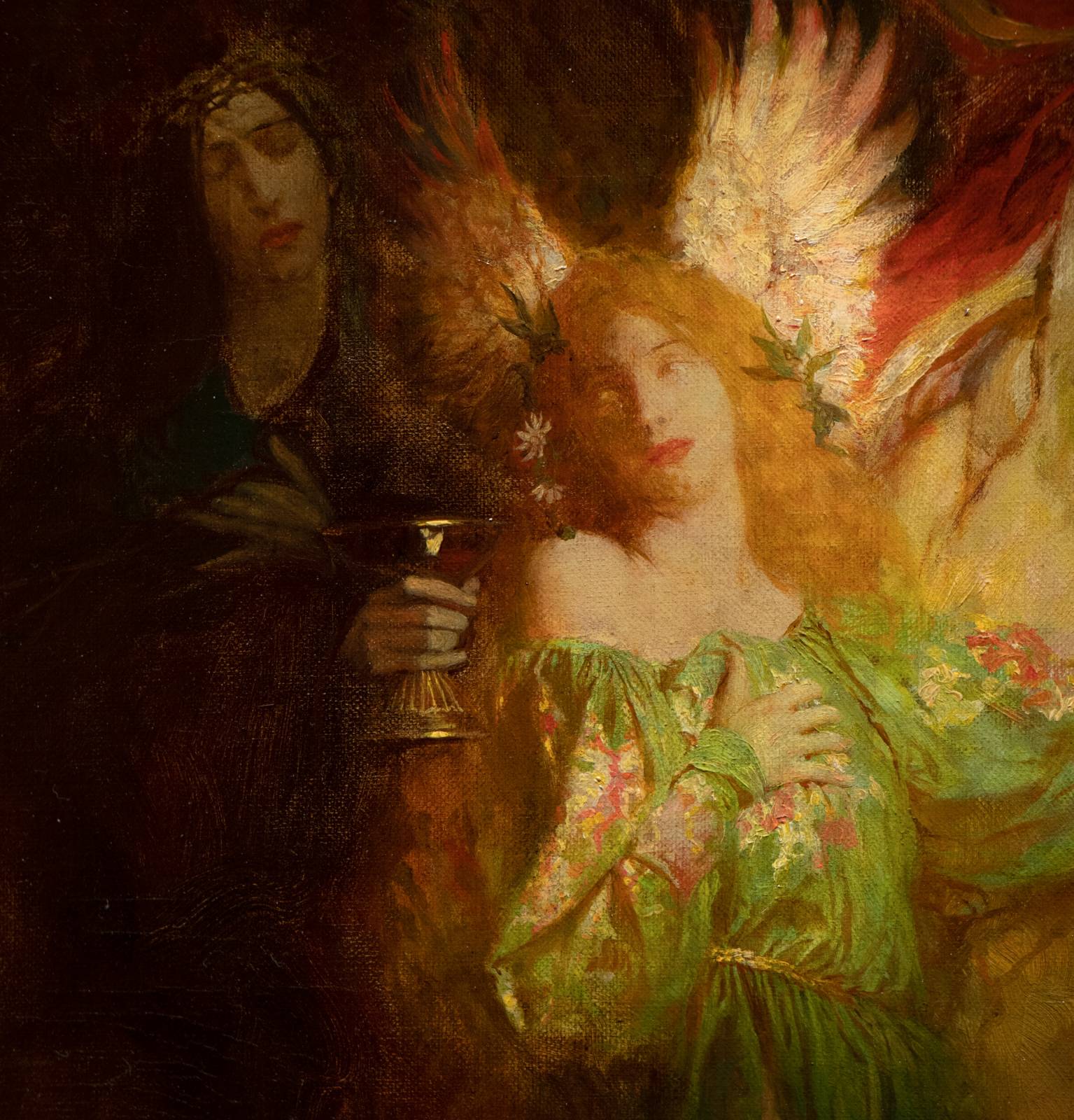
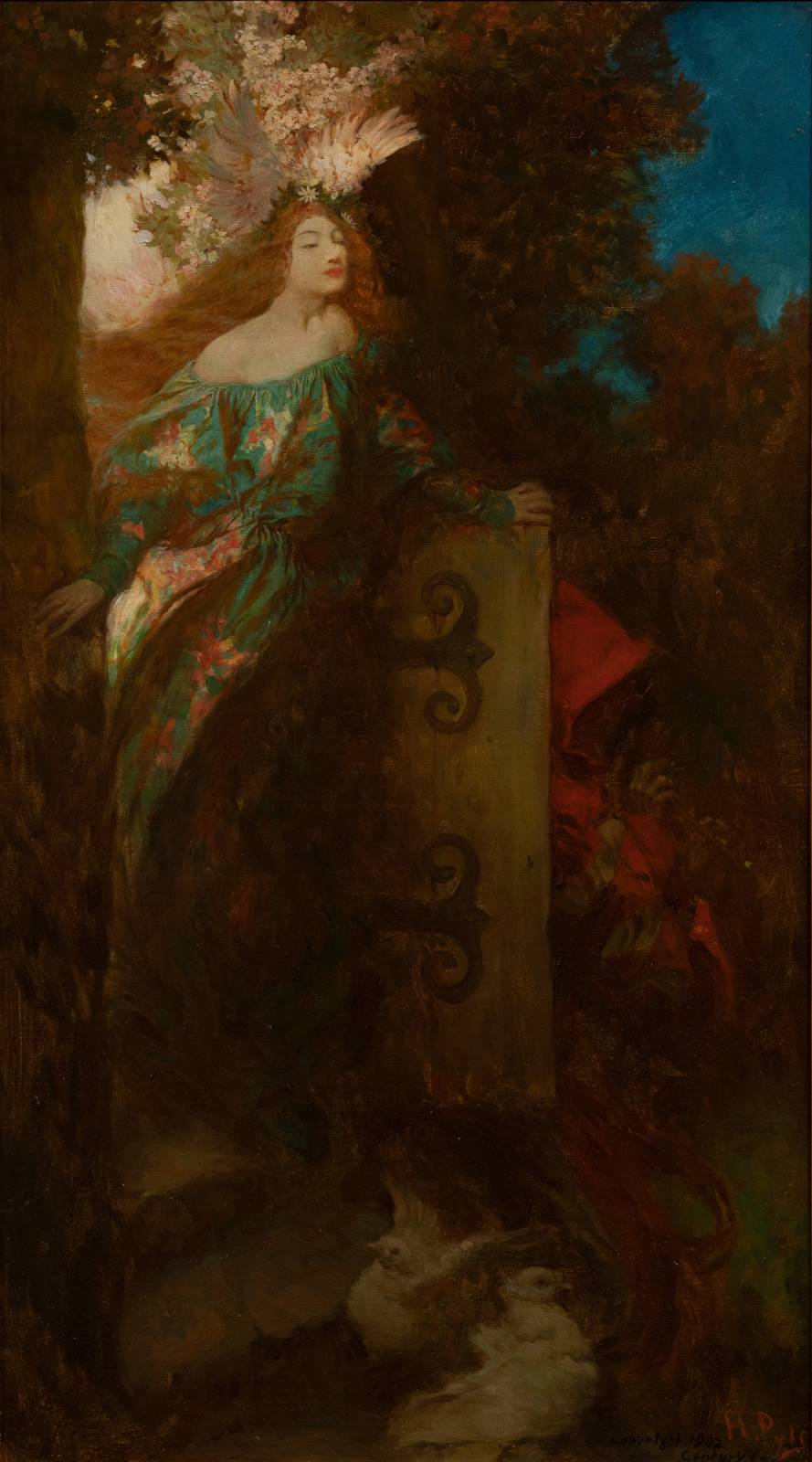
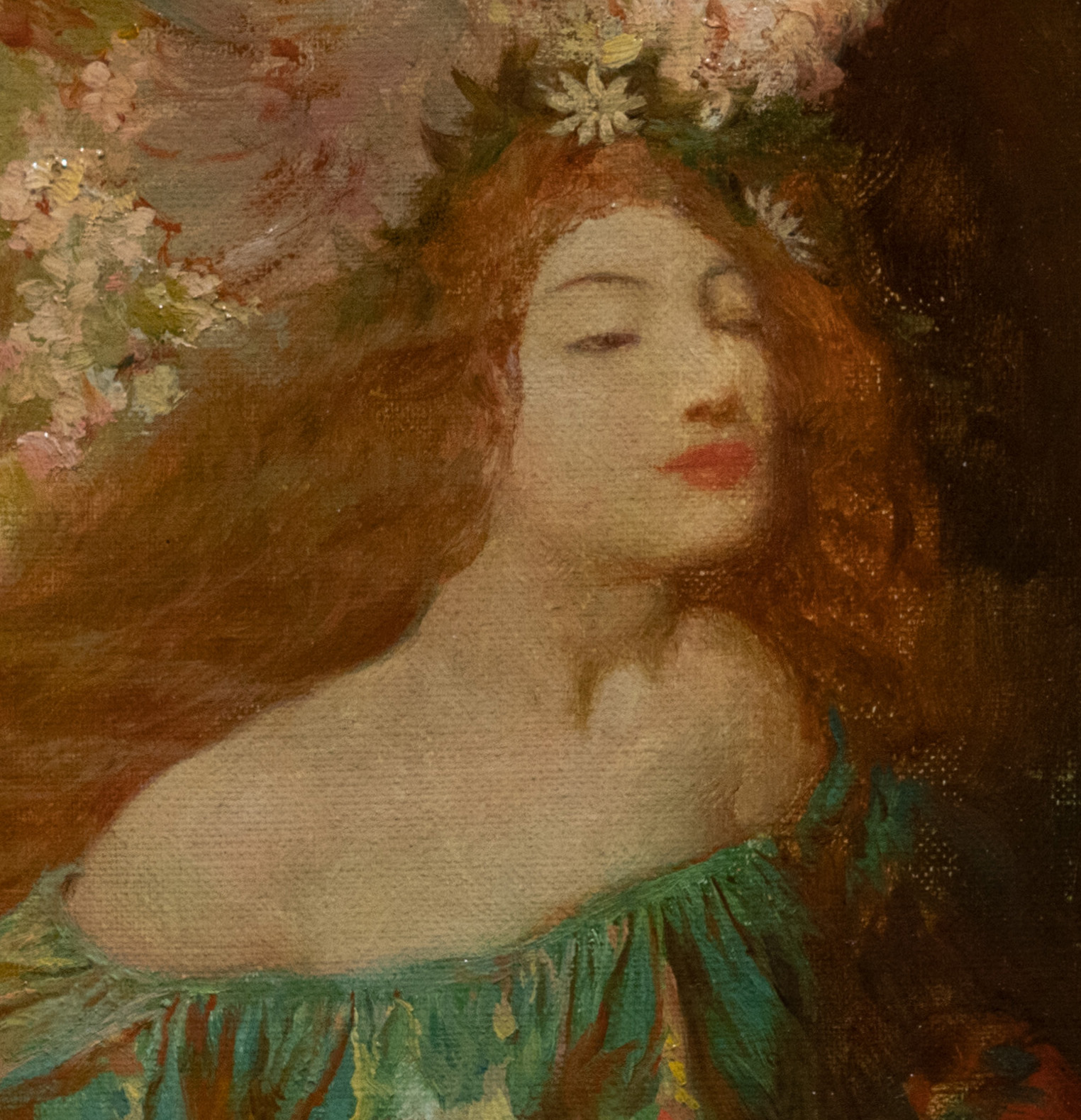
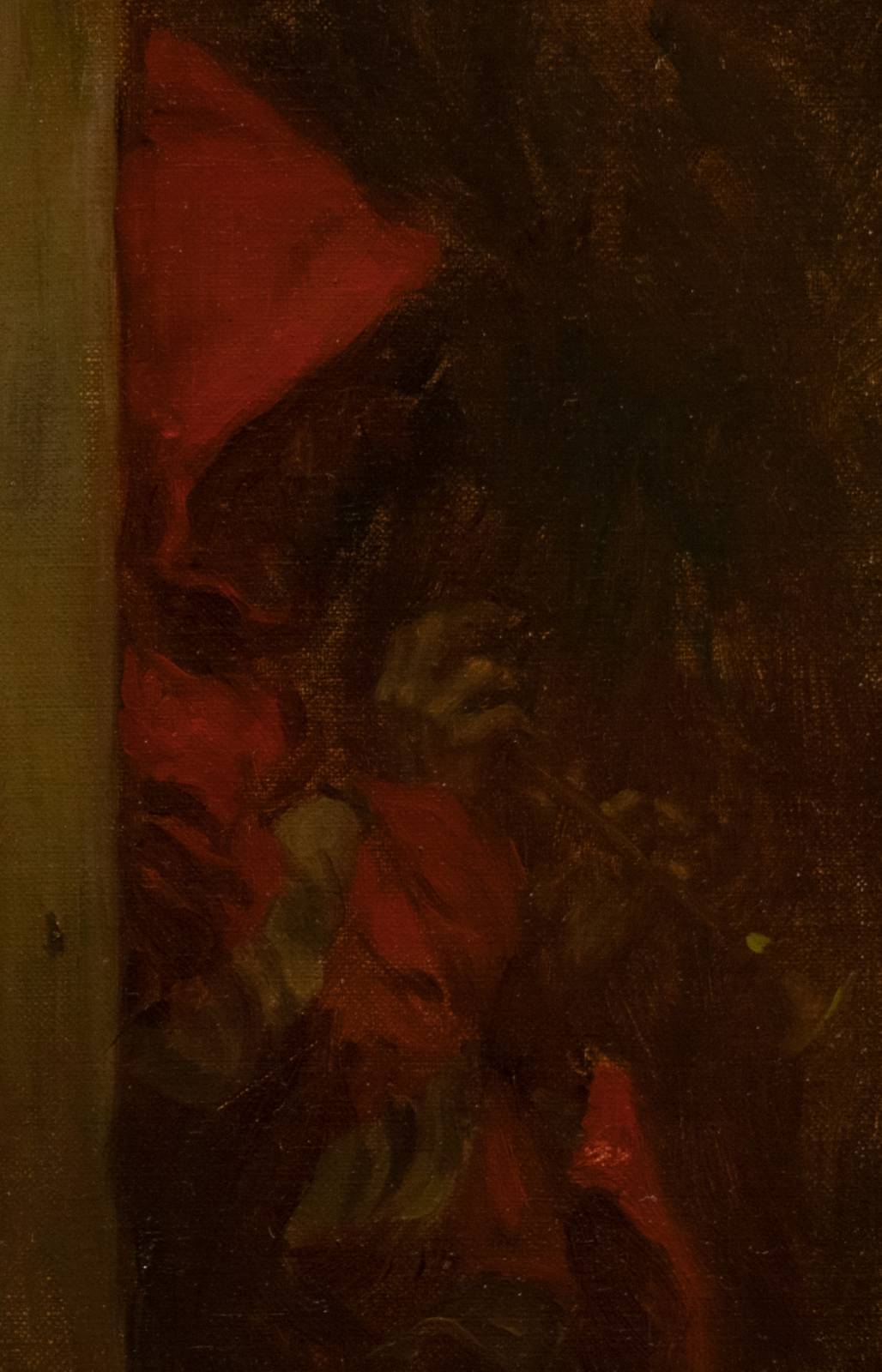

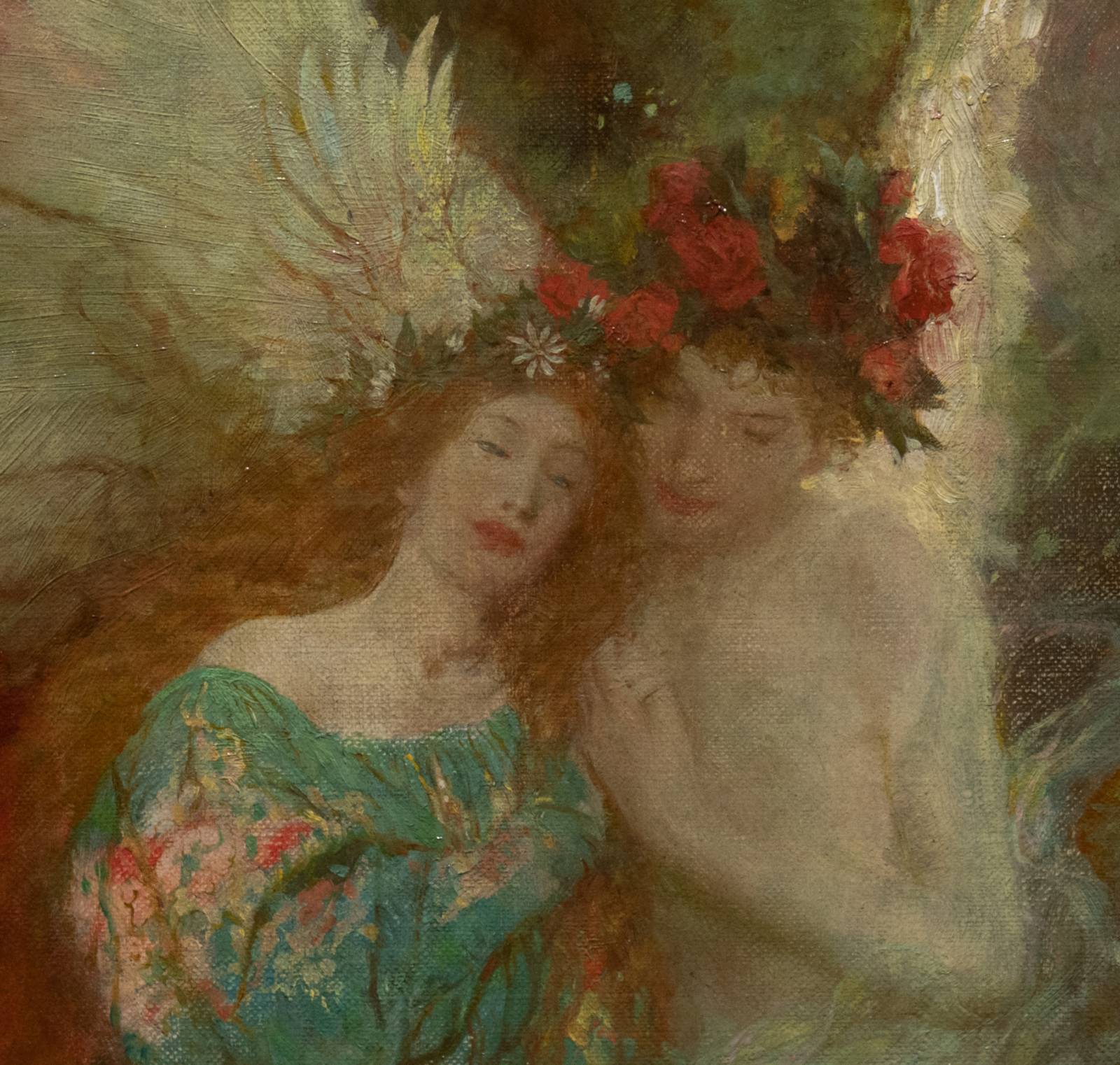

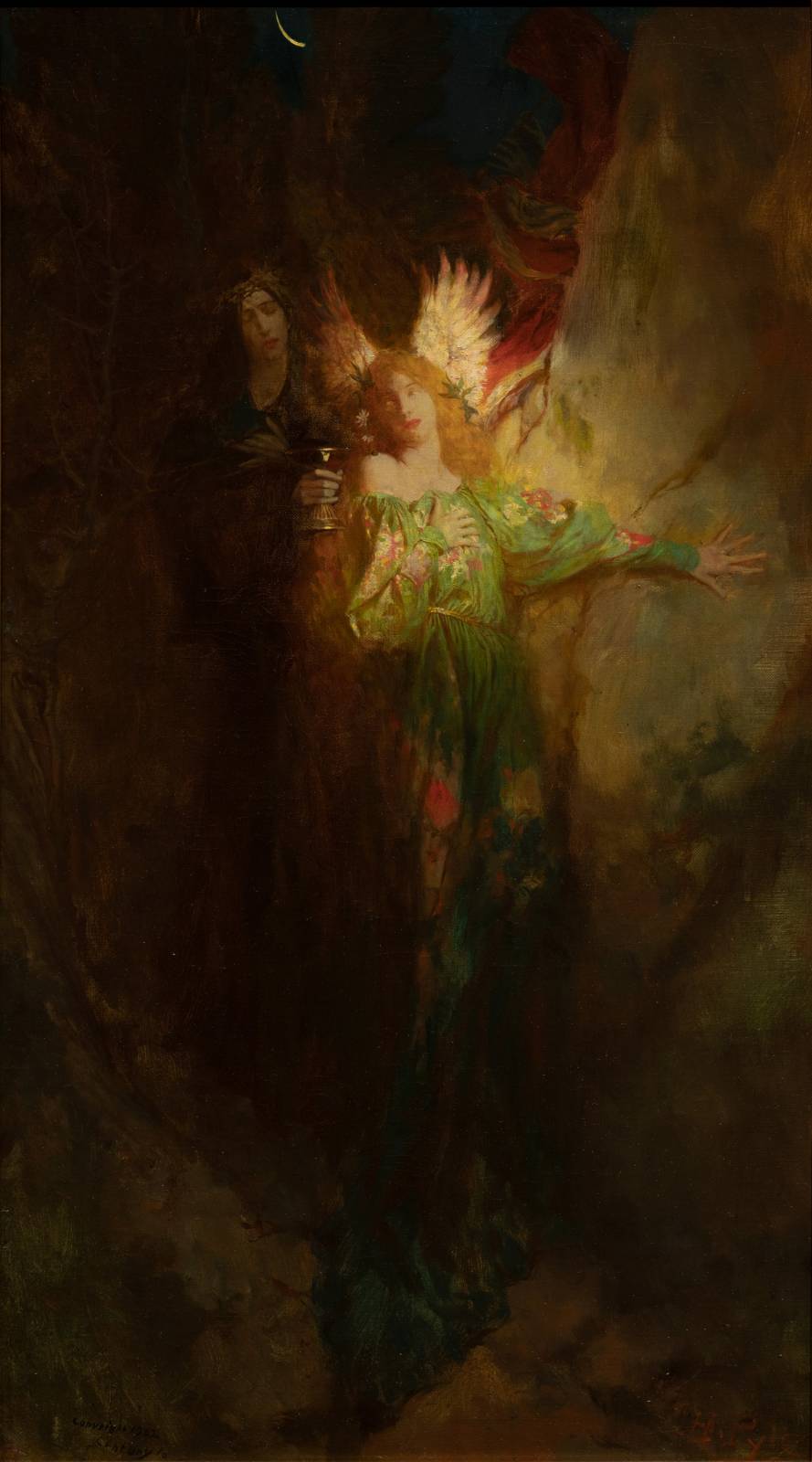
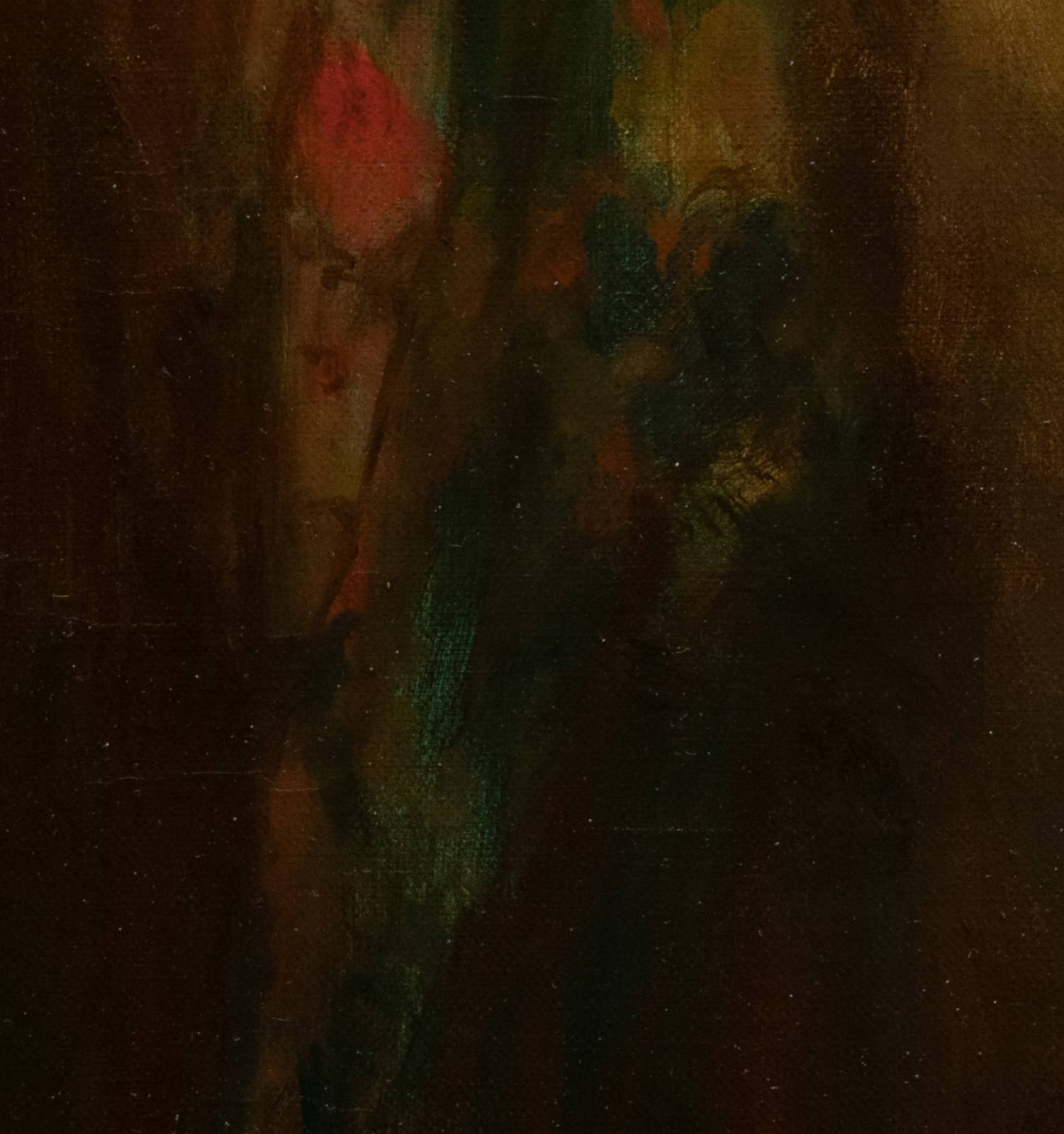
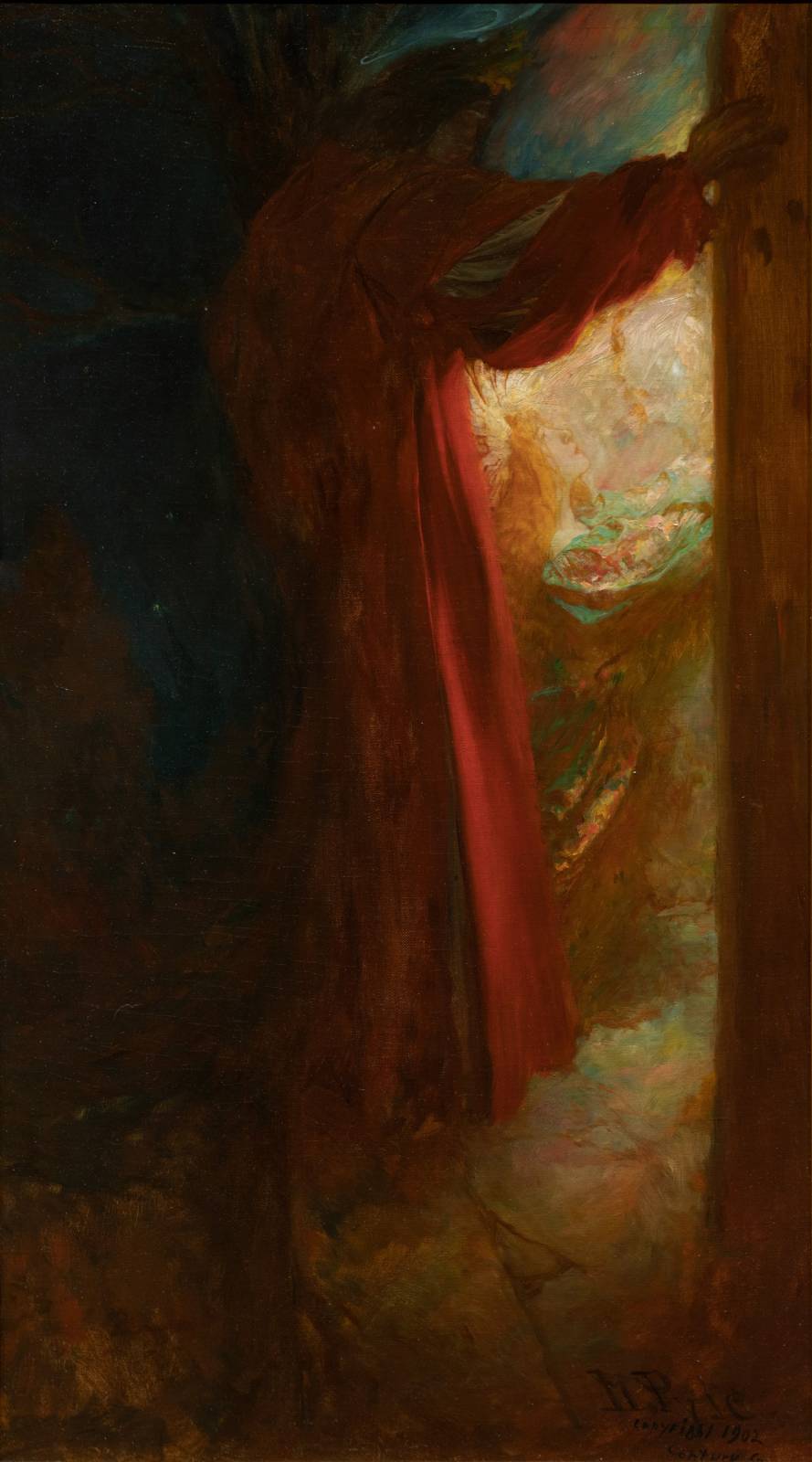
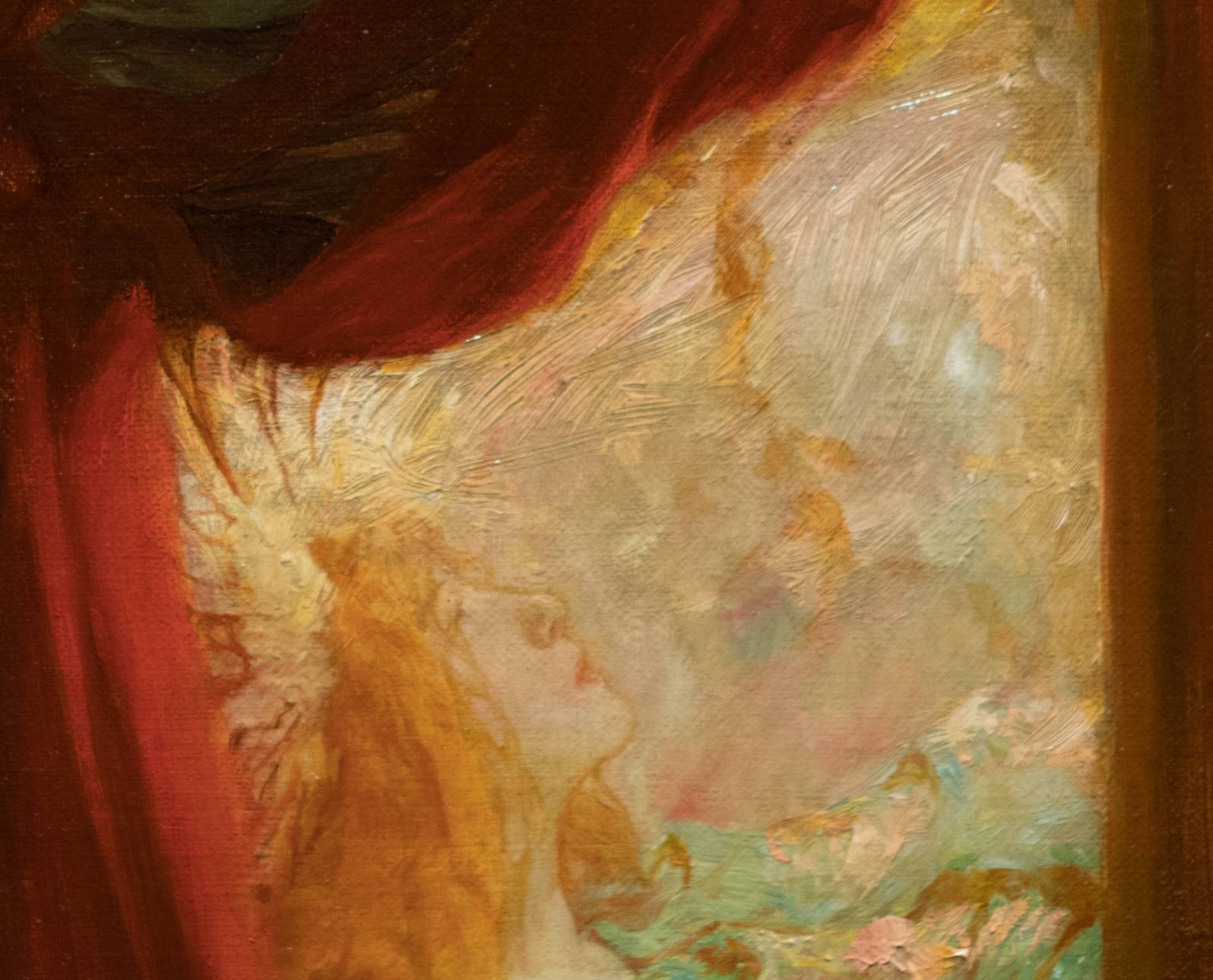
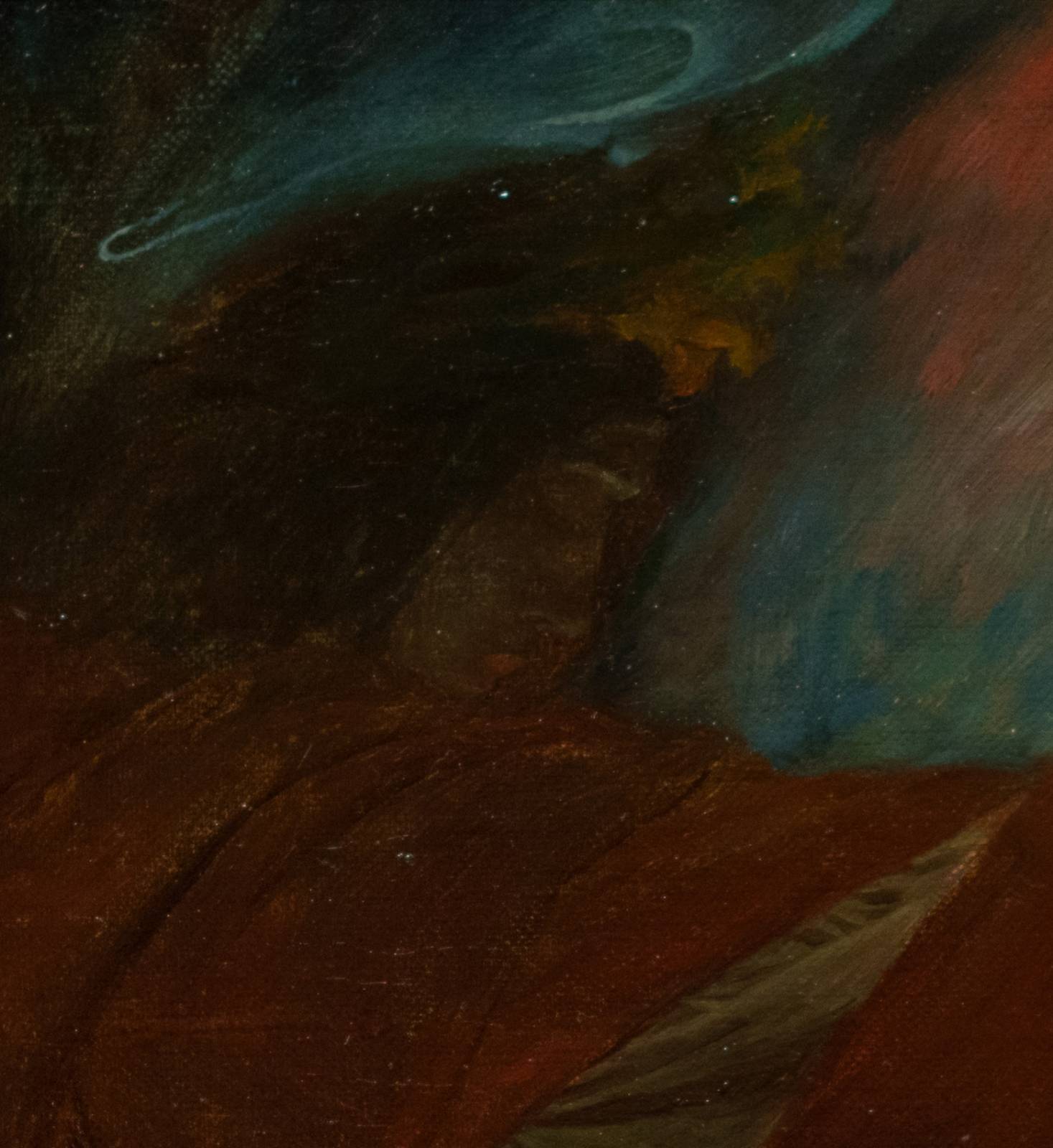
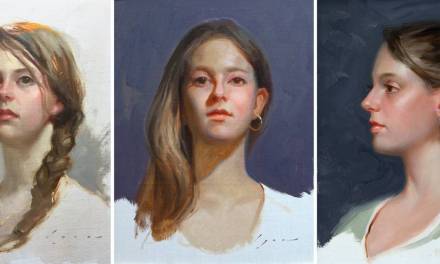
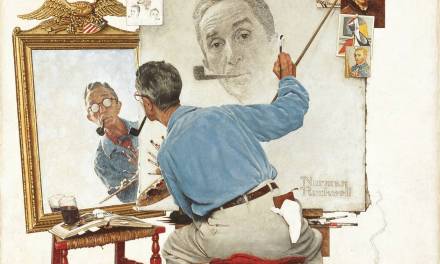

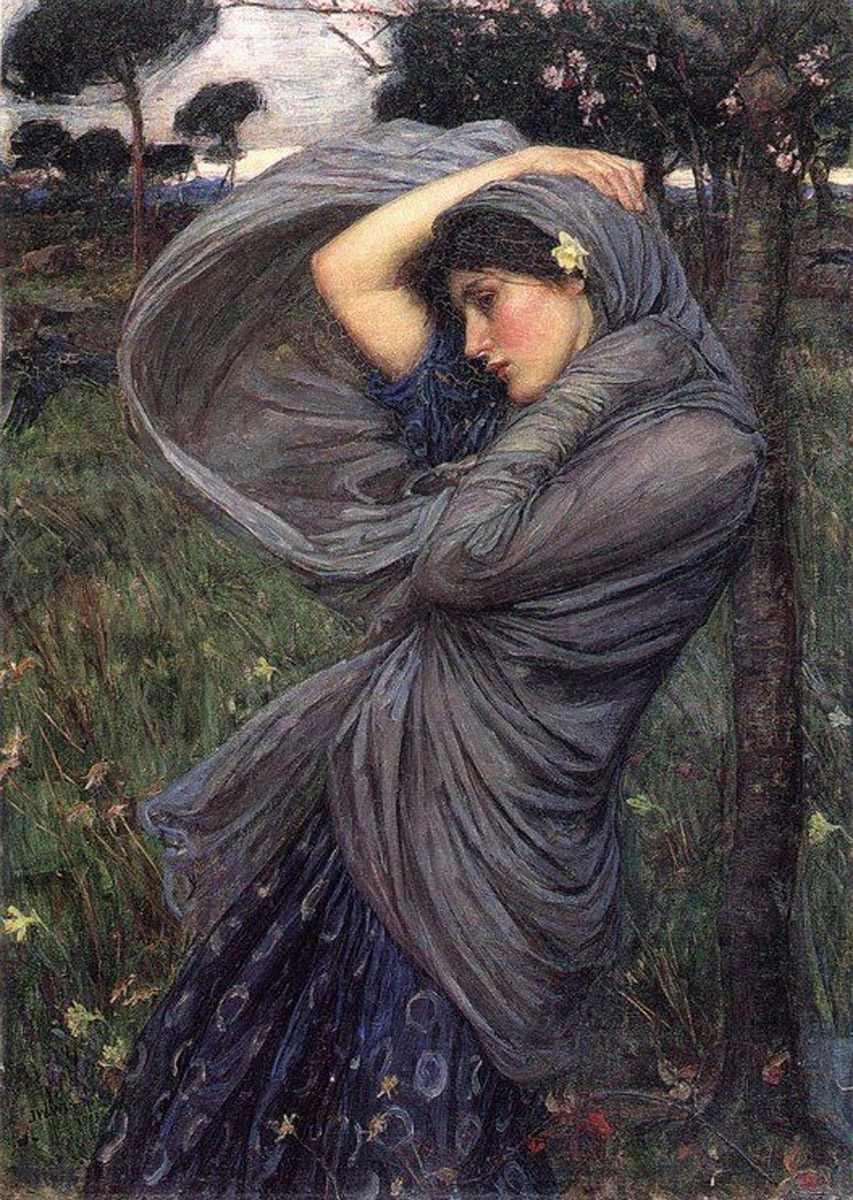
I find it really interesting that in the last piece we finally see Death’s face and he’s actually a rather attractive man instead of some ghoulish figure! I wonder if Pyle did that to symbolize that death wasn’t actually something to be feared.
That’s a great observation! I bet you are right about Pyle’s intentions. It’s a very hopefully series of paintings for me.
Great shots and enjoyed reading your appreciation of these great Pyle works.
I saw this exhibition in person too and kept coming back to these. They fascinated me so much that, now, a couple of years later, I’m still thinking about them and googling. This is how I found your wonderful and insightful article that has been a pleasure to read.